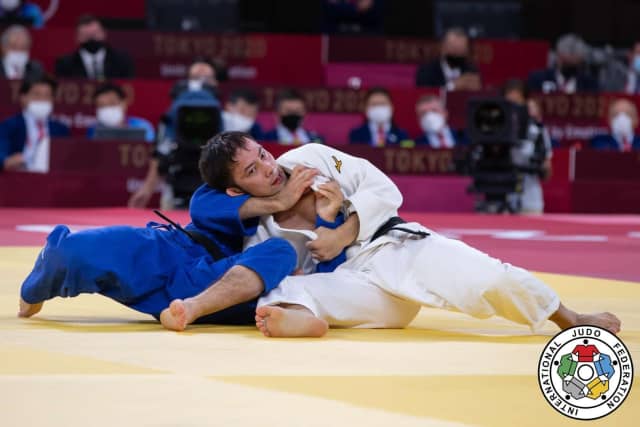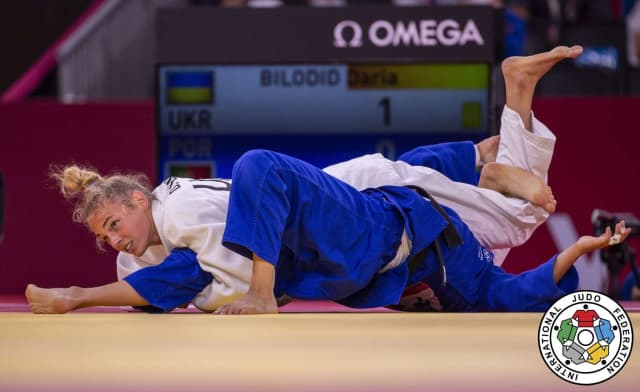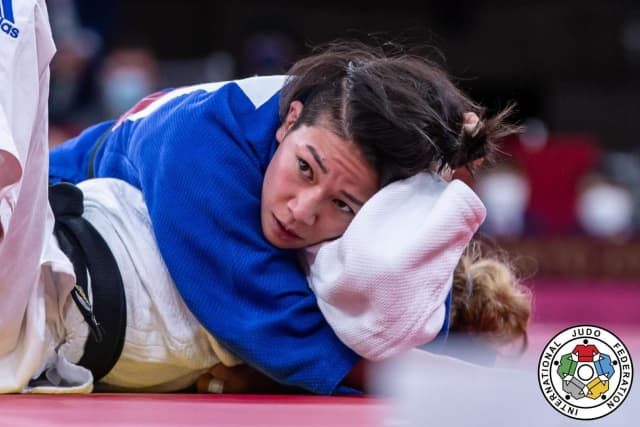All the medallists in the two lightest categories, women and men without exception, faced battles of enormous tactical complexity. Most of them ended up on the ground and that is where a fight within a fight begins. It is territory for the octopus, you have to be persistent and patient.
“To throw is spectacular,” explains Florin Daniel Lascau, IJF Head Referee Director, “but working through a strangle or an arm lock is to bring a very beautiful subtlety. For true judo lovers, a good job on the floor constitutes a special gourmet menu."
Remember the Rio Olympics, specifically -100kg? Lukas Krpaleck smashed all the odds from the ground. He is a master of ne-waza. You can tell that he has worked a lot and he won the gold from the ground.
The same has happened in Tokyo. Takato Naohisa scored the first gold medal for Japan after two epic fights that were decided in that territory, so fertile for those who cultivate that soil. In the quarters he had to work hard to escape the tentacles of the Georgian Lukhumi Chkhvimiani. In the semi-finals Takato and Kazakh Yeldos Smetov staged an agonising combat, a work of art lasting more than eleven minutes, seven of them on the ground. Both are world champions and practise offensive judo in which they combine attacks of all kinds. Takato's main weapon is the tomoe-nage where Smetov prefers the uchi-mata. However, to be a world champion and above all an Olympic champion, you don't have to give up the ne-waza.
“Without ne-waza you cannot reach the highest possible level,” confirms Daniel. "There are some who win without practising it but they give up a considerable percentage of their potential because the most complete judoka always have a better chance of victory, it is logical, and the ne-waza is part of the total judoka panoply."
Takato subdued Smetov, from just one detail, a tiny mistake from the adversary. The ground was the lifeline of the Japanese.
The same can be said for his compatriot Tonaki Funa or the Ukrainian Daria Bilodid at -48kg. Tonaki won silver after defeating Rio champion Paula Pareto in the quarter-finals. The Argentine succumbed to Tonaki's excellent work on the ground.
As for Bilodid, she used her great wingspan to wrap up the Portuguese Catarina Costa and take bronze.
It's nice but it takes time to build an attack in ne-waza. Again, Lascau comes to our aid. “You cannot build an offensive from the ground without time. That is why the referee is so important, because judoka need a minimum to get into position, that is, a bit of freedom for an open ground work period."
Takato took that freedom, Tonaki and Bilodid too. It is not about forgetting what is essential, which is winning, or denying the spectacularity of a well-executed uchi-mata or an osoto-gari. They are fluid movements and a beauty difficult to match. They are like the attacks of a feline, terrible but beautiful. Ne-waza is something else, it is like the embrace of a constricting snake. Just as terrible and for many, as beautiful as the rest.



